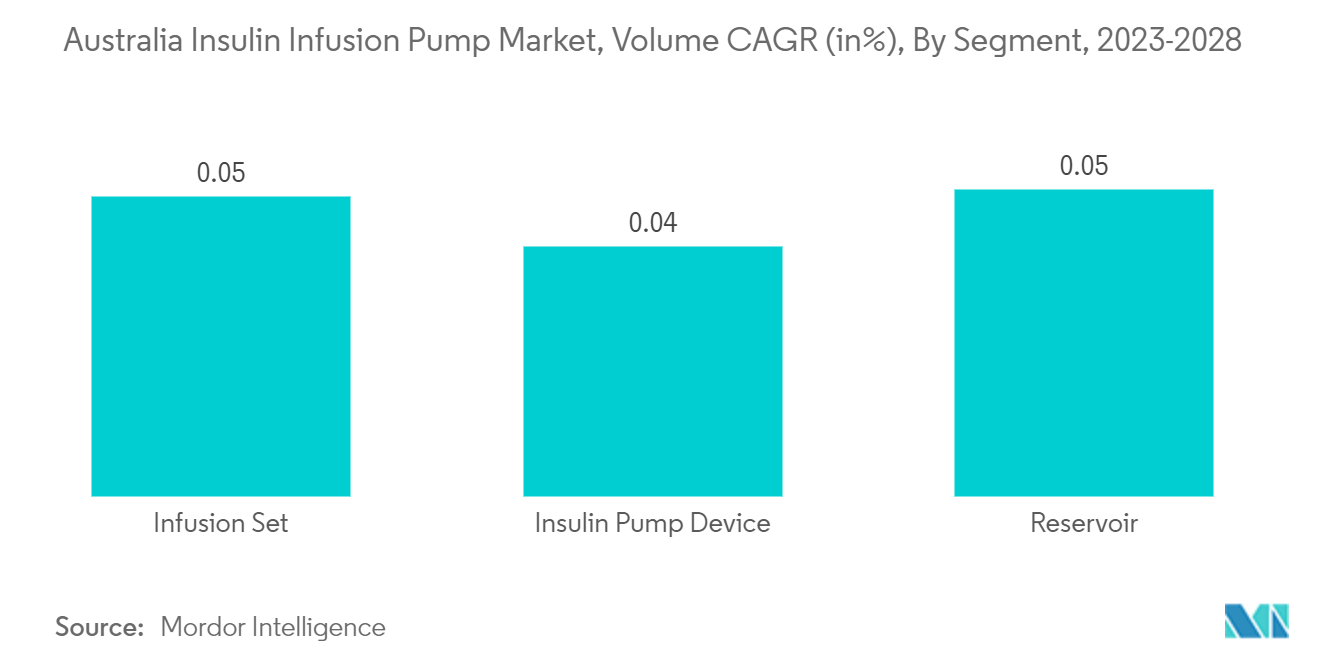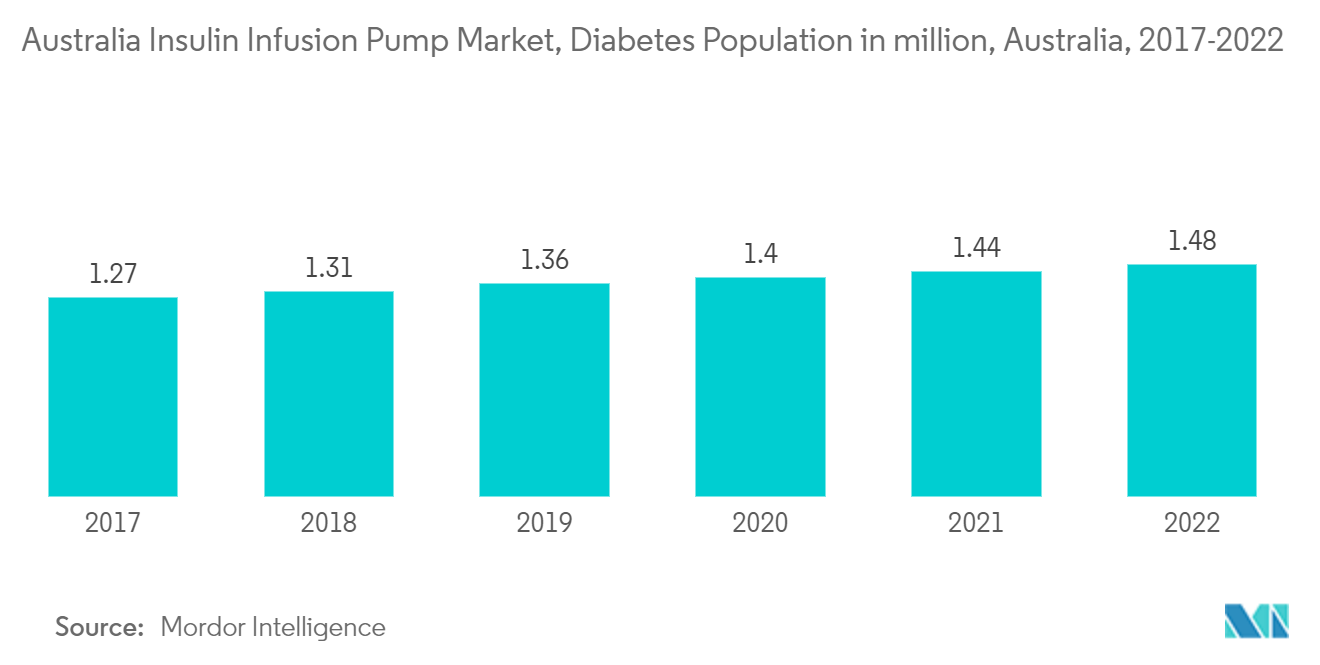Market Trends of Australia Insulin Infusion Pump Industry
Insulin Pump is Expected to Witness Growth Over the Forecast Period
An insulin pump is a device that delivers insulin on a continuous or as-needed basis. The pump is based on the human pancreas. The insulin infusion pump can be used in place of the traditional daily injection routine or an insulin pen. Insulin pump therapy is a popular insulin administration method for persons with type 1 diabetes (T1DM). Pumps are a well-known, time-tested therapy option for T1DM patients of all ages, delivering near-physiological insulin delivery when the pancreas fails to produce insulin. Pumps with remote controls allow parents to suspend or bolus insulin from a distance while their child is playing or eating.
In Australia, about 80% of all insulin pumps are delivered to persons with private health insurance, resulting in an unequal funding scheme. Insulin pumps are not inexpensive to Australians who do not have private insurance. Some persons with type 1 diabetes who have a documented clinical need are currently being denied insulin pump therapy under the government-funded Insulin Pump Programme. Funds are presently being devoted to continuing consumables, resulting in a reduction in the number of pumps delivered. There are currently various divisions between financing sources for insulin pump therapy, pump provision, the multidisciplinary clinical services necessary to begin pump therapy, and continuous evaluation. As a result of the absence of integration and coordination, various issues arise, and insulin pump therapy is frequently used.
The insulin infusion pump market is predicted to grow further as the obesity rate rises, inherited risks for type 2 diabetes rise, and the number of Type 1 diabetes patients rises.

Rising diabetes prevalence
Australia has one of the world's highest incidences of type 1 diabetes. In the last year, about 3021 new cases of type 1 diabetes have been reported (8 new cases every day). According to the most recent Australian data, one in every five persons with type 1 diabetes may be unaware of hypoglycemia and hence more vulnerable to dangerously low blood glucose levels. Insulin pumps, continuous glucose monitoring, and newer closed-loop devices may be able to aid in the prevention of hypoglycemia. Due to the expense and limited availability, only around 12% of Australians with type 1 diabetes have access to insulin pump therapy, compared to the estimated 25% in the United States. Even though type 1 diabetes affects fewer than 1% of the general population, complications account for 4% of all ambulatory care or hospital admissions and 5% of all hospital bed days, accounting for more than angina or asthma. For every 1% increase in HbA1c above 7%, the risk of serious problems rises by around 30%. Although intensive insulin treatment lowers the risk of long-term problems, it is linked with a threefold increase in severe hypoglycemia6. Thus, intense blood glucose regulation is required for long-term health but might be difficult to attain in normal practice.
The Australian Government has highlighted preventive health action through the National Preventive Health Strategy 2021-2030, which seeks to build a stronger and more effective preventative health system to improve Australians' health and well-being. The Australian Diabetes Society (ADS) is Australia's leading national medical and scientific organization for diabetes. Endocrinologists, scientists, researchers, diabetes educators, primary care practitioners, and allied health professionals are members of the ADS. The ADS mission is to prevent diabetes and its complications, to provide excellence in education for health professionals, to promote collaboration, research, and clinical guidelines and standards, to collaborate with unified partners such as Diabetes Australia and the Australian Diabetes Educators Association, who are committed to improving diabetes treatment and educate patients how to use an insulin pump device and other medical devices, to advocate for health policies related to diabetes and its prevention, and to support people with diabetes in living well.


